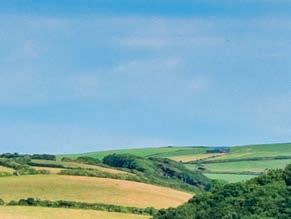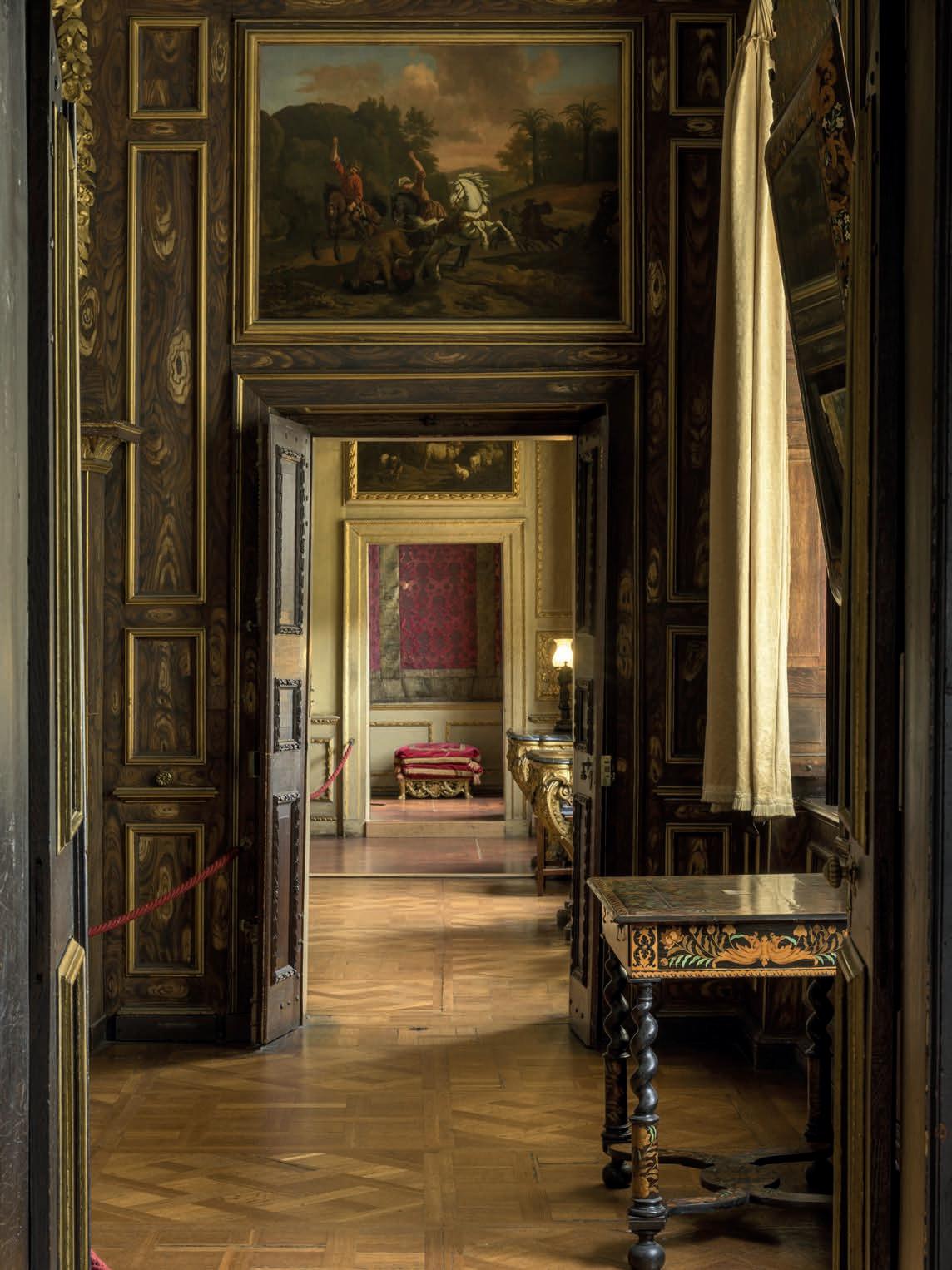
































































Britain is scattered with sites that stir the imagination, from prehistoric stone circles to windswept coastal ruins and enchanted forests. Here, we journey through some of the country’s most mystical places
britain

A UNESCO World Heritage Site, the Giant’s Causeway on Northern Ireland’s Antrim coast is famed for its 40,000 interlocking basalt columns, formed by volcanic activity 60 million years ago. But myth offers another tale: that giant Finn McCool built the causeway to confront a Scottish rival. The natural wonder is strikingly geometric, resembling a colossal pathway disappearing into the sea. Science explains it, but the awe it inspires transcends geology. The echo of legend, the wild Atlantic, and the strange perfection of the stones create a mystical experience. nationaltrust.org.uk











In romantic Boscastle, thatched cottages cluster around a harbour that was once a hive of wreckers, smugglers and witches
















Left: The pretty fishing village of Boscastle was supposedly home to witches, who enticed sailors with the promise of 'selling the wind'
built in 1933 by Frederick Thomas Glasscock, a custard millionaire. A passionate student of Arthurian legend, Glasscock built the building as the headquarters of the Order of the Fellowship of the Knights of the Round Table. He commissioned a sequence of over 70 stainedglass windows depicting the myths, as well as recreations of King Arthur’s throne and ‘Round Table’.
As Cornish legend has it, the real Round Table is buried deep below an ancient circular earthwork called Bossiney Mound, less than a mile from Tintagel. It can only be seen on Midsummer night, when it is said to rise, shimmering gold, and illuminate the sky for a moment before sinking once more into the depths.



A tranquil walk through a wooded valley cut through by the River Trevillet leads to St Nectan’s Glen, where a spectacular waterfall gushes through a narrow ssure in the rock and plunges 60ft to the basin below. In this enchanted place the Knights of the Round Table were said to have been blessed before setting off on their quest for the Holy Grail. Over the years it has evolved into a spiritual and sacred site, reputedly the haunt of fairies and piskies. The trees here are hung with ribbons, crystals and other tokens left by the thousands of pilgrims who visit every year.
There are more tales of wonder at the romantic village of Boscastle, where whitewashed thatched cottages cluster round a harbour that was once a hive of wreckers, smugglers – and witches. In days of old, the local ‘witches’ were in the business of ‘selling the wind’ to sailors. They would capture the wind in knots of rope, and the sailors would then buy the charmed rope to blow their
The question of whether or not Arthur truly existed continues to puzzle historians. One view is that Arthur lived at the end of the 5th century and was a warrior, not a king; following the retreat of the Romans from Britain, he united the Celts against the Saxon invaders.
Most believe that Arthur is a composite of several historical and mythological characters, embellished and romanticised with the retellings of successive authors. The first writer to tell Arthur’s story was the 12th-century monk Geoffrey of Monmouth, who in his History of the Kings of Britain presented the tale of King Arthur as fact, and introduced key elements such as Arthur’s father Uther Pendragon, his wife Guinevere, the wizard Merlin and the sword Excalibur.
Geoffrey begins his History with a dedication claiming that the book is merely a translation of a “very ancient book”, but this was a common claim at the time to add authenticity to new writing. Whatever the truth, medieval readers eagerly swallowed the story, and heroic King Arthur entered public consciousness.
More romantic, whimsical twists to the tale – Camelot, Avalon, the Holy Grail, and Lancelot, Gawain and Galahad – came later, woven out of folklore. Works such as Sir Thomas Malory’s Le Morte d’Arthur in the 15th century and Alfred Lord Tennyson’s Idylls of the King in the 19th century further embellished the legend to fit the social and political mood of their time.




Lavish, grand – and haunted? These stately homes may boast opulent interiors and manicured gardens, but look a little closer and you’ll find eerie legends, ghostly residents and centuries of supernatural suspense
As legend has it, Anne Boleyn, beheaded wife of Henry VIII, returns to her childhood home on the anniversary of her execution. Each year on 19 May, she’s said to arrive in a ghostly coach driven by a headless horseman – her own head resting on her lap. Inside, visitors have reported cold spots and ickering lights. The grand Jacobean mansion is now owned by the National Trust, but it seems some of its Tudor-era residents never checked out. nationaltrust.org.uk

Often described as one of the most haunted houses in England, Ham House, a beautifully preserved 17th-century mansion, sits quietly on the banks of the Thames in leafy Richmond, but its past is anything but serene. The ghost of Elizabeth Murray, Duchess of Lauderdale, is said to linger here, her perfume still occasionally detected in empty rooms. Staff have also reported cold draughts, strange noises and eerie sensations in the basement. nationaltrust.org.uk
















The wild and magical landscapes of Snowdonia in North Wales are steeped in myth and legend
